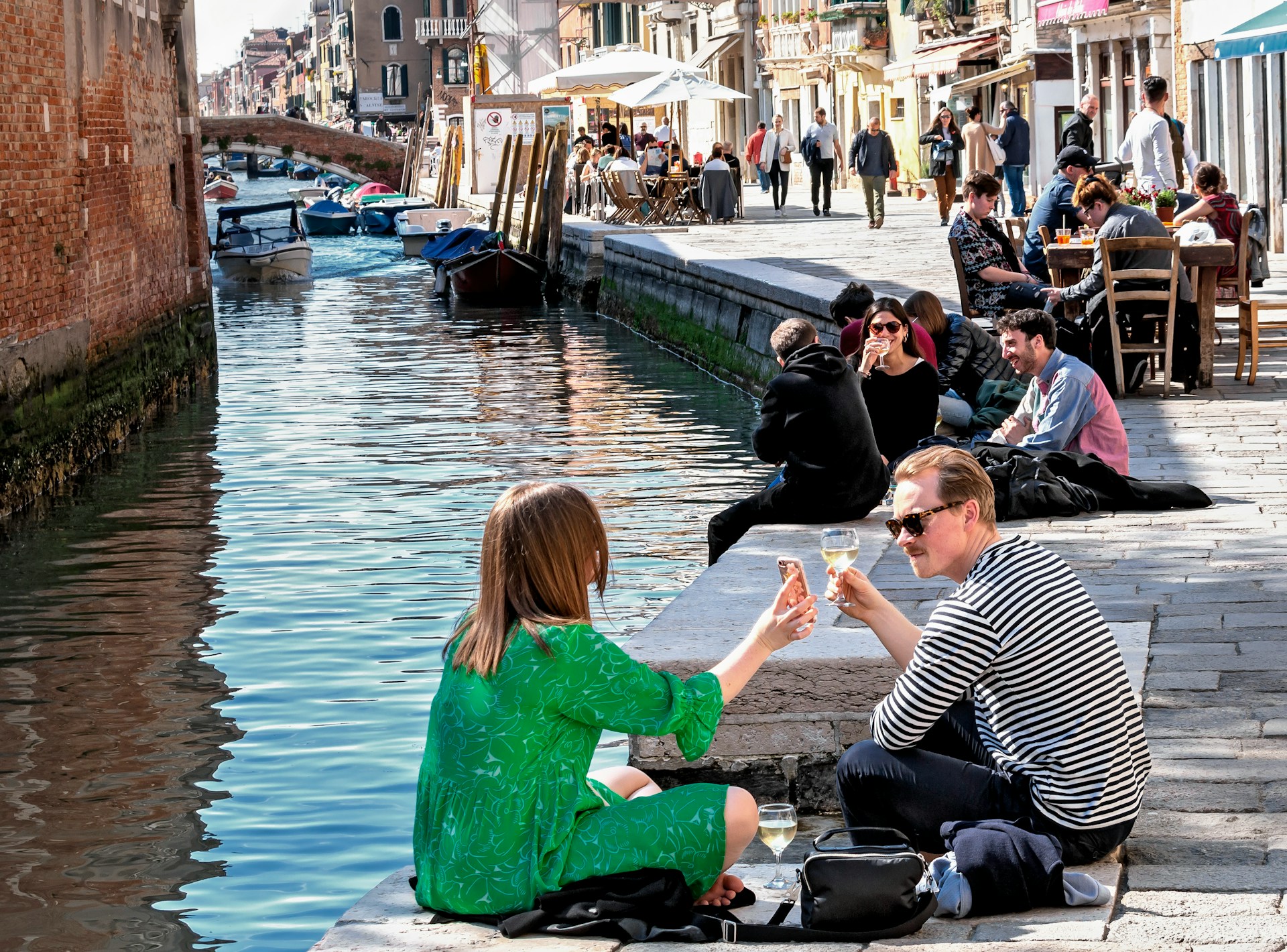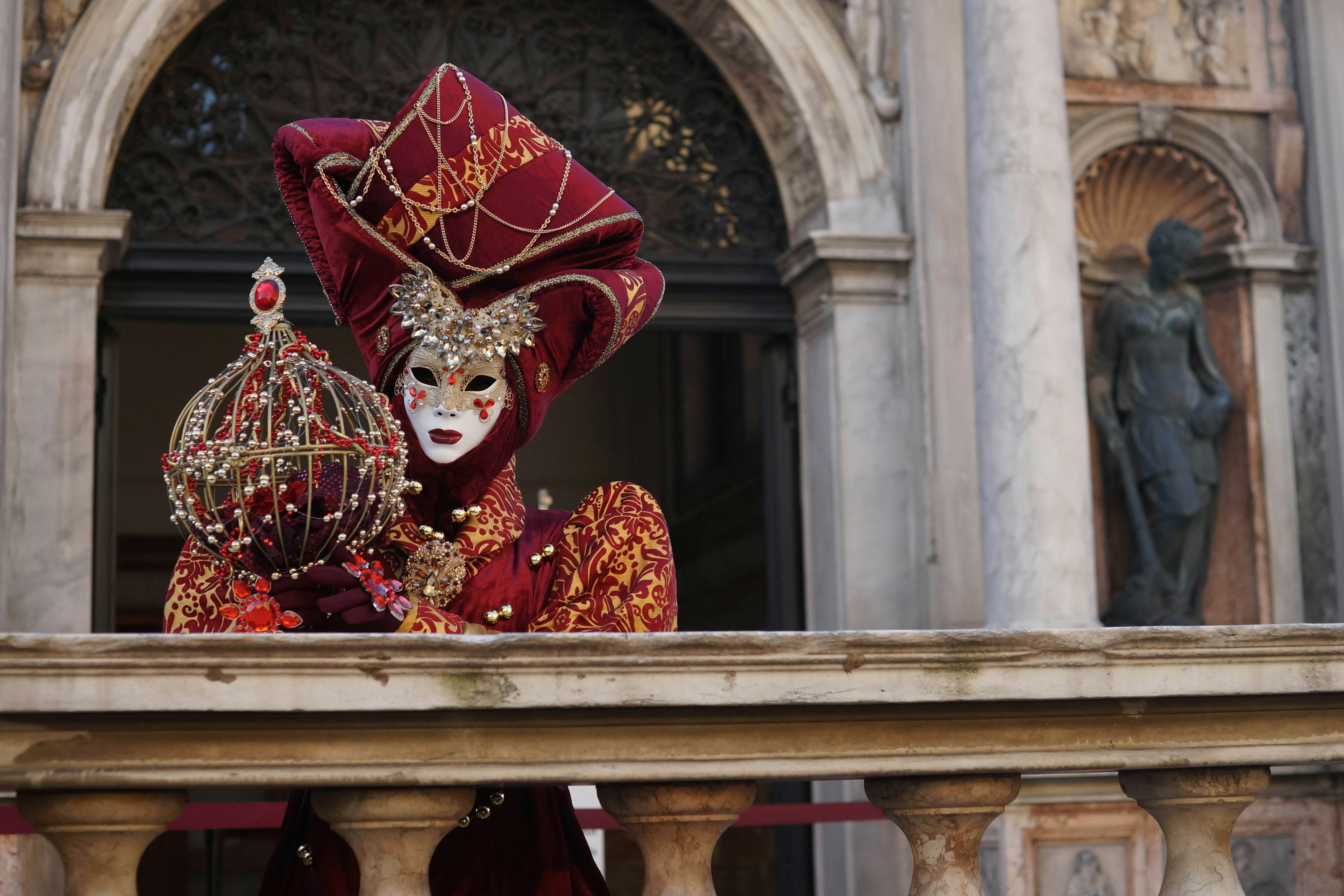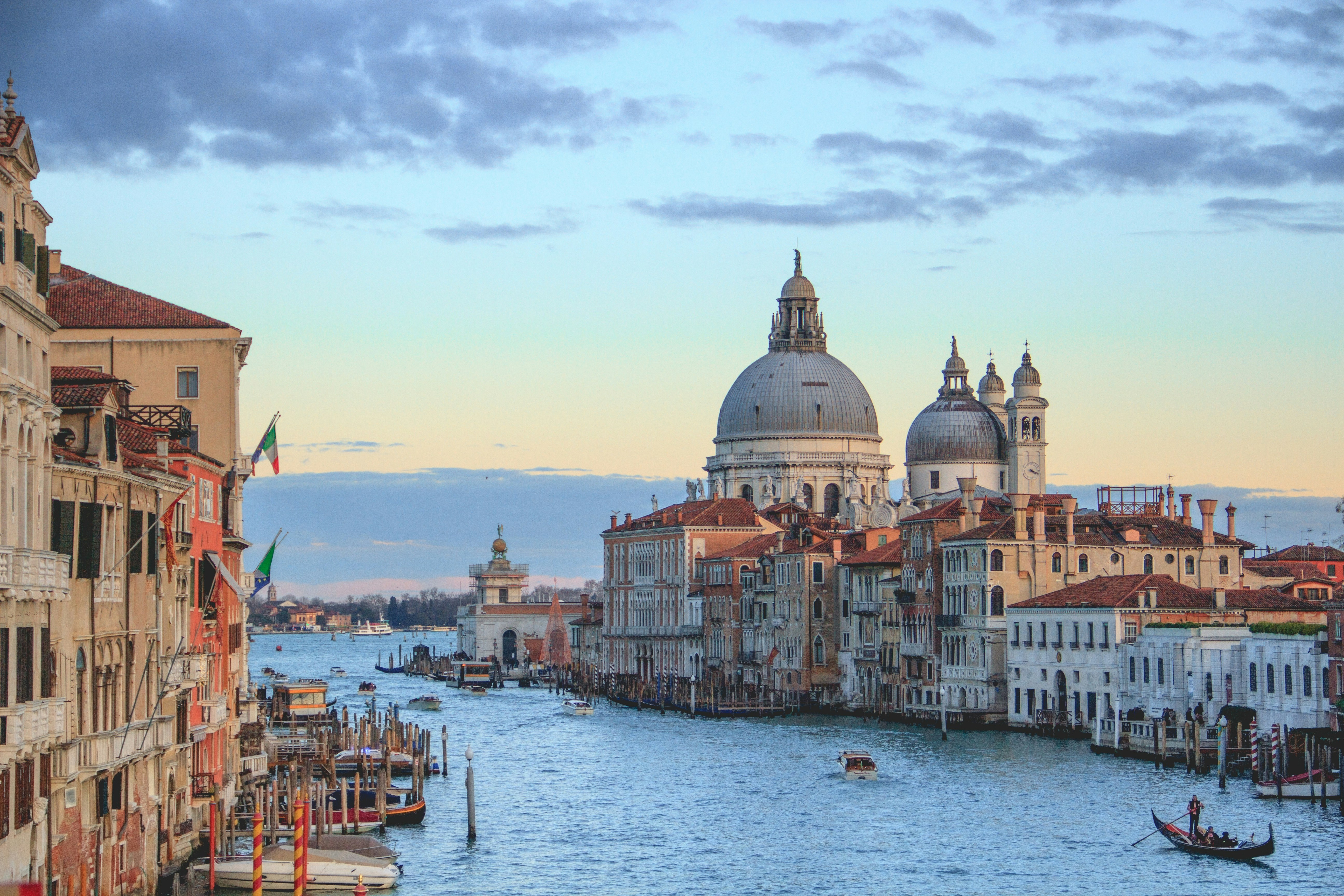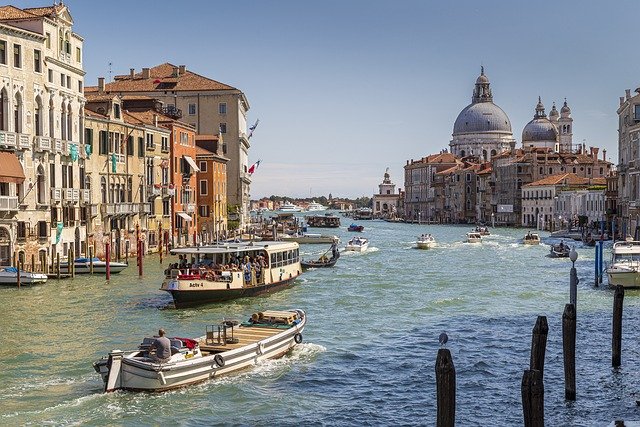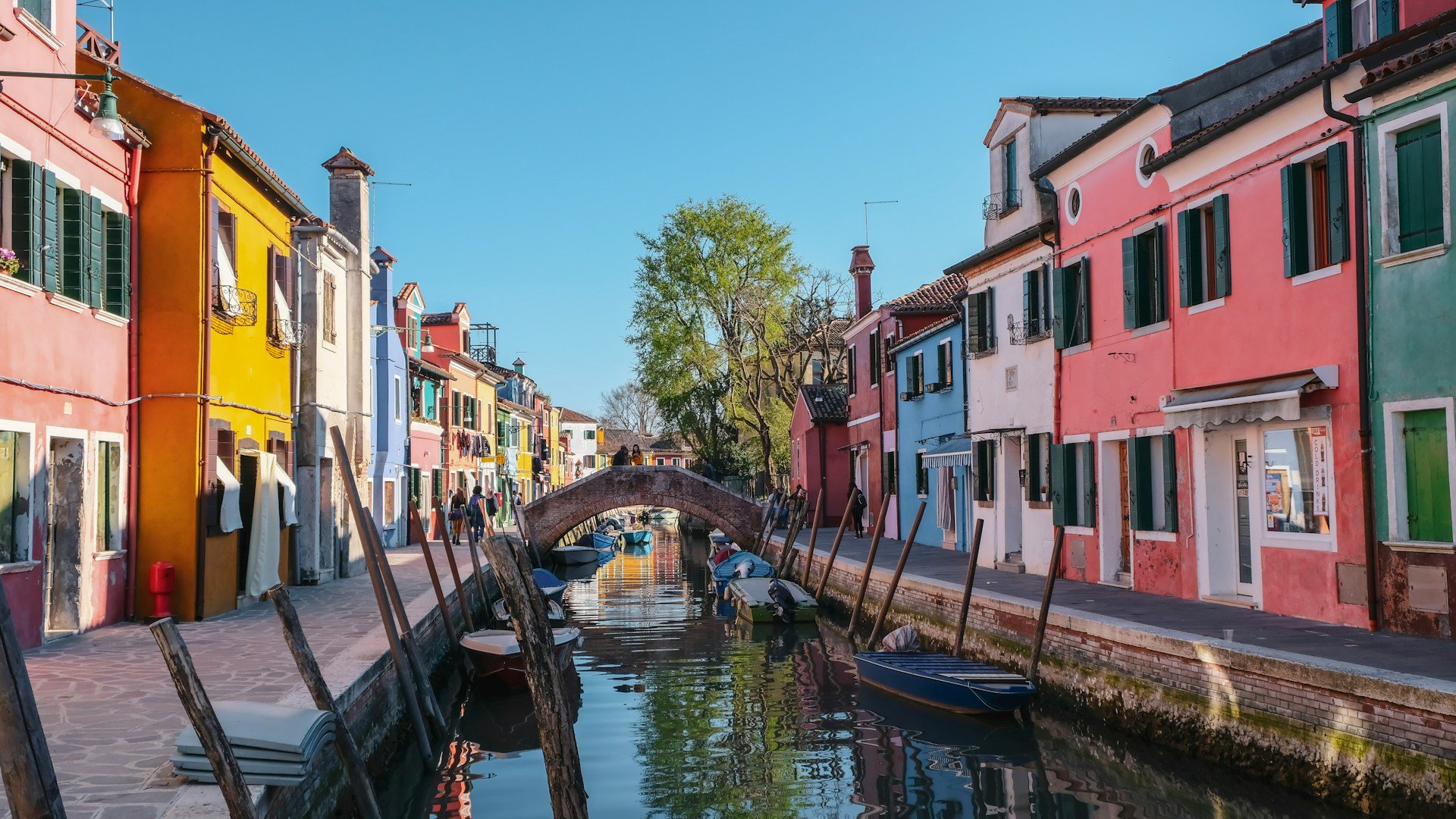WHEN TO VISIT VENICE
Venice is a year-round destination, but some months are quieter than others. Choosing when to visit Venice depends mostly on your preferences.
Here are some tips to assist you with your planning.
Remember to check whether the dates of your visit are Venice Access Fee days. Find out more about this here.
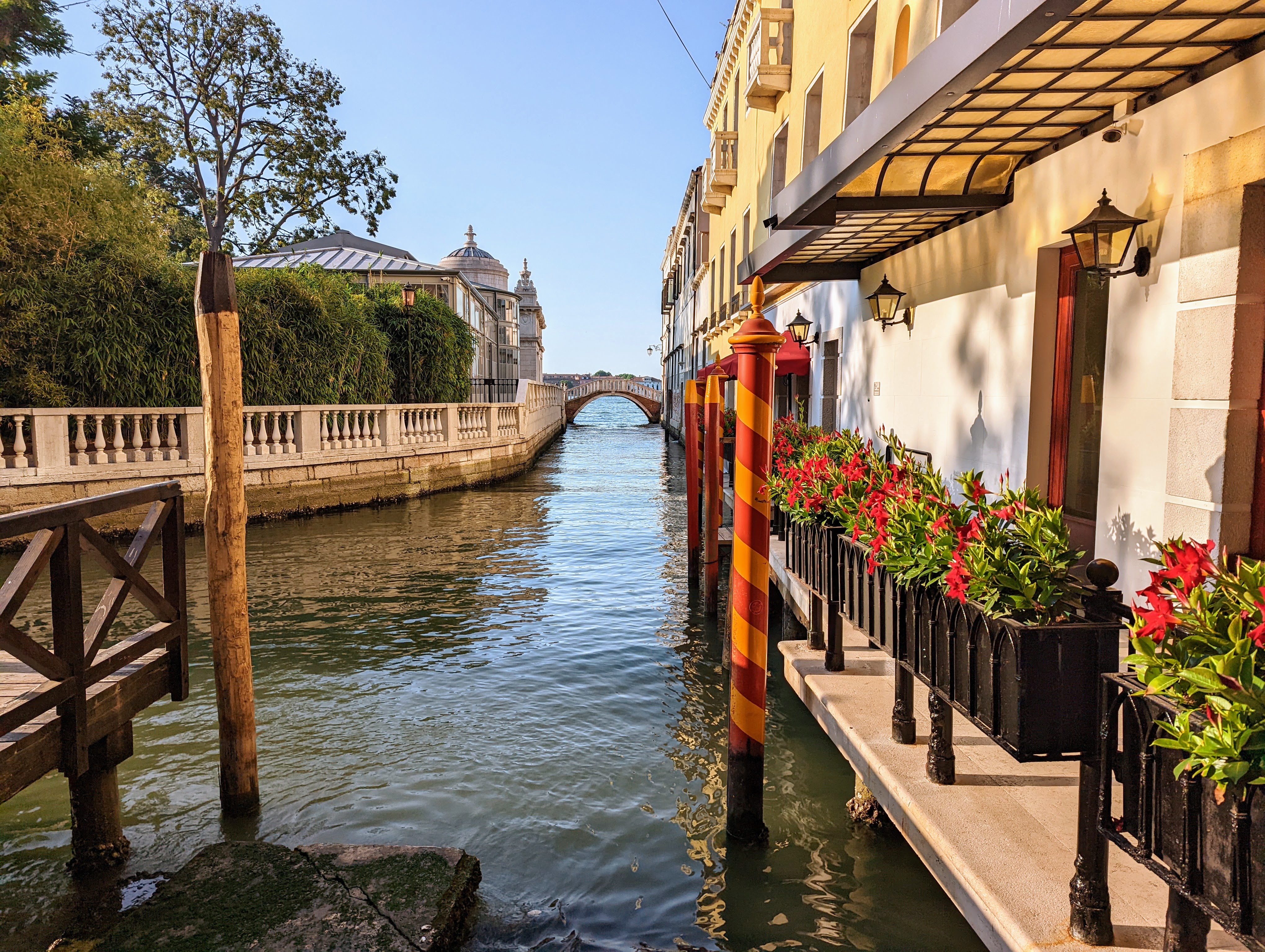 Late evening in Venice
Late evening in VeniceSpring
1. Pleasant Weather
- Spring, especially from late March to May, offers mild and comfortable temperatures, typically ranging from 10°C to 20°C (50°F to 68°F).
- The days are longer, giving you more time to explore.
2. Fewer Crowds (Compared to Summer)
- Spring usually sees fewer tourists compared to the peak summer months. This makes it easier to enjoy sites like St. Mark's Basilica and the Rialto Bridge without the overwhelming crowds.
3. Festivals and Events
- Spring often coincides with cultural events, such as Easter celebrations or Venetian rowing regattas.
- Late spring may also include music, theatre, or art events hosted throughout the city.
4. Lower Humidity
- Unlike summer, spring tends to be less humid, making it more enjoyable for walking and sightseeing.
Tips for Visiting Venice in Spring
- Bring layers: Mornings and evenings can be cool, but it warms up during the day.
- Book in advance: Accommodation and tours can still fill up quickly, especially around Easter.
- Water levels: While spring is not peak season for acqua alta (flooding), be aware that high tides can still occur occasionally, particularly in early spring.
Summer
PROS
1. Vibrant Atmosphere
- Venice is buzzing with energy in summer, with lively streets, busy canals, and plenty of events.
- Many festivals take place, such as the Festa del Redentore (July), which features a stunning fireworks display over the lagoon.
2. Long Days
- The long daylight hours allow you to enjoy sightseeing, gondola rides, and exploring the islands of Murano and Burano well into the evening.
3. Beach Options
- If the city gets too hot, you can escape to the Lido, Venice’s beach area, for a refreshing break by the Adriatic Sea.
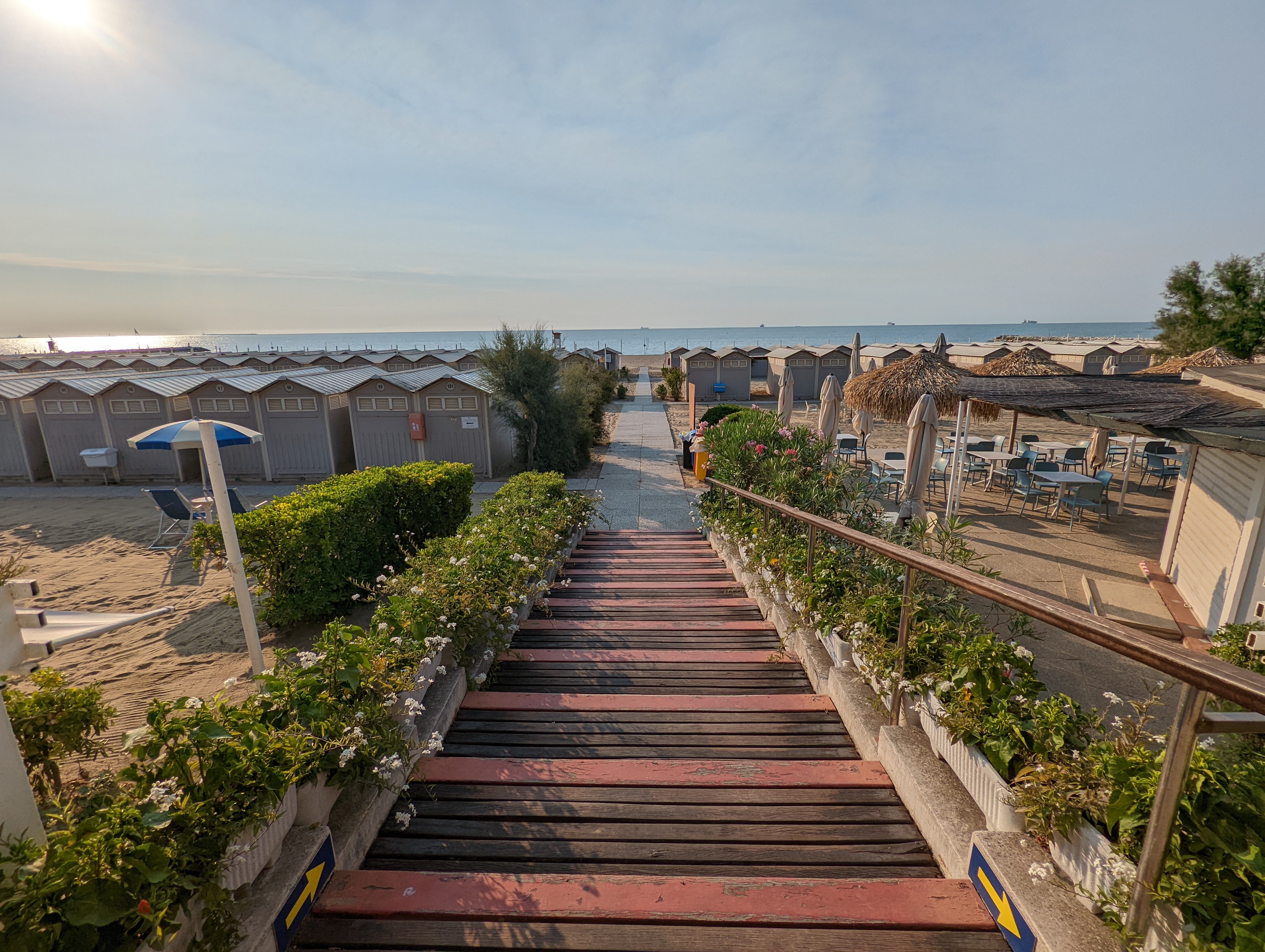 A beach on the Lido, Venice
A beach on the Lido, VeniceCONS
1. Heat and Humidity
- Summer in Venice (June to August) can be quite hot and humid, with temperatures often reaching 28°C to 35°C (82°F to 95°F) or more.
- The heat can make walking around the city less enjoyable, especially at midday and in the afternoon.
2. Crowds
- Summer is peak tourist season, so major attractions can be extremely crowded.
- Accommodation prices are at their highest, and you may need to book well in advance.
3. Odours
- In the height of summer, the canals may emit an unpleasant smell due to stagnant water and heat. However, this issue is not as pronounced as it once was.
4. Mosquitoes
- Mosquitoes are more common in summer, particularly near the lagoon and at night. Be prepared with repellent.
Tips for Visiting Venice in Summer
- Stay Hydrated: Bring a reusable water bottle; there are public fountains with drinkable water around the city.
- Avoid Peak Hours: Sightsee early in the morning or late in the afternoon to avoid crowds and the heat.
- Dress Comfortably: Wear light, breathable clothing and comfortable walking shoes.
- Pre-Book Everything: From accommodation to museum tickets, booking ahead is crucial during this season.
- Plan for Shade: Take breaks in shaded cafes or museums to cool off.
Autumn/Fall
Autumn is a wonderful time to visit Venice, particularly in September, October, and early November.
PROS
1. Milder Weather
- The summer heat and humidity ease off, with temperatures typically ranging from 12°C to 24°C (54°F to 75°F) in September and cooling further as the season progresses.
- This makes it a comfortable time for exploring the city on foot.
2. Fewer Crowds
- After the peak summer tourist season, Venice becomes less crowded, especially in October and November.
3. Stunning Scenery
- Venice looks magical in autumn, with golden light reflecting on the canals and a crisp atmosphere. The colours of fall can be especially striking in the city’s parks and along the waterways.
4. Cultural Highlights
- Autumn is a great time for cultural events, such as:
- Venice Film Festival (early September), attracting celebrities and film enthusiasts.
- Regata Storica (first Sunday of September), featuring traditional boat races and parades.
- Seasonal art exhibitions, especially during years with the Venice Biennale.
5. Food and Wine Season
- Autumn is the harvest season in Italy, so it’s an excellent time to enjoy fresh, seasonal produce.
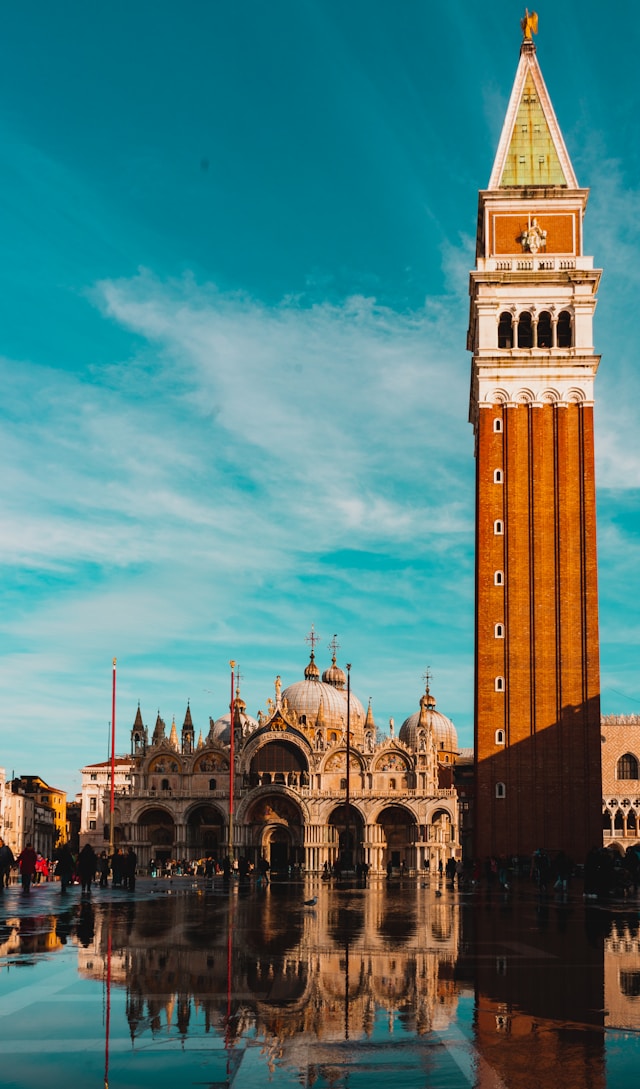 Acqua alta in Venice
Source
Acqua alta in Venice
SourceCONS
1. Acqua Alta (High Water)
- Venice is more prone to acqua alta in late autumn, particularly in November. While it can disrupt some plans, the city is well-prepared with elevated walkways, and the experience of seeing Venice partially underwater can be unique and beautiful.
2. Shorter Days
- By November, the days get shorter, with sunset occurring earlier in the evening. This can limit daylight hours for outdoor sightseeing.
Tips for Visiting Venice in Autumn
- Prepare for Rain: Bring a waterproof jacket and comfortable shoes that can handle wet streets, as autumn can be rainy.
- Stay Informed About Acqua Alta: Check local tide forecasts, and consider packing waterproof boots if visiting in late autumn.
- Dress in Layers: Temperatures can vary significantly between day and night, so layering is key.
- Book in Advance for Early Autumn: September can still be busy due to lingering summer tourists and events like the Venice Film Festival.
Winter
PROS
1. Fewer Crowds
- Winter is Venice’s off-peak season (except during the Carnival in February), making it one of the quietest times to explore the city.
2. Unique Atmosphere
- Venice takes on a mystical charm in winter, with its foggy mornings, serene canals, and tranquil streets. The mist adds an otherworldly beauty to the city, perfect for photography.
3. Carnival Season
- If you visit in February, you can experience the Venice Carnival, famous for its elaborate masks, costumes, and lively celebrations. It’s a unique cultural event but expect more crowds and higher prices during this time.
4. Affordable Travel
- Winter (excluding Carnival) is one of the cheapest times to visit Venice. You can find lower prices for flights, hotels, and tours, making it an excellent choice for budget travellers.
5. Cosy Culinary Experiences
- Winter is perfect for enjoying hearty Venetian dishes, such as:
- Risotto al nero di seppia (squid ink risotto).
- Sarde in saor (sweet-and-sour sardines).
- Warm drinks like hot chocolate or mulled wine.
6. Christmas and New Year’s Magic
- Venice during Christmas and New Year’s is beautifully decorated, with lights reflecting on the canals and festive markets offering handmade gifts and seasonal treats.
CONS
1. Cold Weather
- Temperatures in winter range from 0°C to 10°C (32°F to 50°F). Since it’s very humid, it can be very cold, especially when a north wind is blowing from the sea.
2. Shorter Days
- The days are shorter, with sunsets as early as 4:30 pm in December, which limits daylight hours for exploring.
3. Risk of Acqua Alta (High Water)
- Winter is one of the peak times for acqua alta (seasonal flooding). Elevated walkways are provided, and flooding rarely affects all parts of the city at once, but it’s something to be aware of.
4. Limited Outdoor Activities
- Cold and wet weather might make certain activities, like gondola rides, less appealing. However, indoor attractions and cosy cafes make up for it.
Tips for Visiting Venice in Winter
- Dress Warmly: Wear layers, a waterproof jacket, and sturdy shoes, as the streets and bridges can be damp or slippery. Don’t forget to bring gloves, a hat, and a scarf, as the humidity makes the cold feel even sharper.
- Prepare for Acqua Alta: Pack waterproof rubber boots (ideally knee-high) and check tide forecasts. And a change of shoes, just in case.
- Book Early for Carnival: If visiting during the Venice Carnival, book accommodations and event tickets well in advance.
- Enjoy Indoor Attractions: Spend time exploring Venice’s museums, churches, and art galleries to escape the cold.
Go back to the main page about Venice
